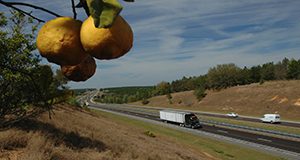El Mandato del Dispositivo de Registro Electrónico (ELD por sus siglas en ingles), se convirtió en mandato para vehículos motorizados comerciales (CMV) el 18 de diciembre del 2017. El 18 de junio del 2018, después de 90 días de extensión, el mandato también se aplicó a transportistas de productos. El propósito principal detrás del ELD fue asegurar el cumplimiento con los requerimientos de Horas de Servicio (HOS) por autotransporte y sus conductores. Este artículo se enfoca en el movimiento interestatal de propiedades (productos), and sus objetivos son: 1) revisar las reglas HOS; 2) clarificar las excepciones agrícolas a las reglas HOS; y 3) ofrecer una discusión preliminar a cómo los ELD podrían afectar a los productores del sur de Florida. Fritz Roka, Tara Wade, Luis Peña-Lévano, y Craig Sprouse. UF/IFAS Food and Resource Economics Department.
http://edis.ifas.ufl.edu/fe1058
Tag: Fritz Roka
The Electronic Logging Devices Mandate and Hours Of Service for Produce Haulers
Electronic logging devices, or ELDs, became mandatory for commercial motor carriers December 18, 2017. The compliance timeline for the produce industry was delayed with two 90-day waivers. On June 18, 2018, however, ELDs became mandatory for produce haulers as well. The primary purpose behind requiring ELDs was to ensure greater compliance with existing hours of service requirements by motor carriers and their drivers. This 5-page fact sheet written by Fritz Roka, Tara Wade, and Craig Sprouse and published by the UF/IFAS Food and Resource Economics Department reviews HOS rules, clarifies agricultural exceptions to the HOS rules, and offers a preliminary discussion as to how ELDs could affect south Florida produce growers.
edis.ifas.ufl.edu/fe1052
Summary of 2013/14 Production Costs for Indian River Fresh Market Grapefruit and Southwest Florida Juice Oranges
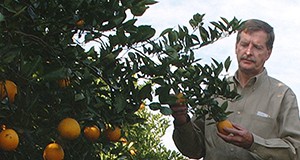
This 10-page report, developed through interviews with growers who managed their own citrus groves, outlines the cost of production budgets for fresh grapefruit and juice oranges grown during the 2013/14 season. The Florida citrus industry is on a steep learning curve as it collectively tries to maintain economically sustainable fruit yields from HLB-infected trees. Growers are experimenting with new materials and management strategies to reduce psyllid populations and improve a tree’s overall nutritional health. As a result, production costs have increased threefold since 2004. Between the 2012/13 and the 2013/14 seasons, production costs increased 30% and 34% for fresh grapefruit and juice oranges, respectively. Since 2004, production costs for fresh grapefruit have increased 182%, while costs to grow juice oranges have increased 211%.
Written by Fritz Roka, Ariel Singerman, and Ronald Muraro, and published by the UF Department of Food and Resource Economics, July 2015.
http://edis.ifas.ufl.edu/fe968
Tree Assistance Program for Florida Citrus Greening
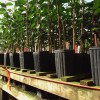 In September 2014, the USDA Farm Service Agency (FSA) announced additional support for commercial Florida citrus growers to manage greening, in the form of an expansion of the Tree Assistance Program (TAP). The original program assisted growers in the event the loss occurred within a single year due to a natural disaster such as a hurricane. The expanded TAP recognizes citrus greening (Huanglongbing, or HLB). The program provides growers cost-sharing financial assistance to replace trees that meet a mortality criterion within a time period of up to six years. This 4-page fact sheet describes eligibility requirements, how the program works, and how to calculate payments. Written by Ariel Singerman and Fritz Roka, and published by the UF Department of Food and Resource Economics, April 2015.
In September 2014, the USDA Farm Service Agency (FSA) announced additional support for commercial Florida citrus growers to manage greening, in the form of an expansion of the Tree Assistance Program (TAP). The original program assisted growers in the event the loss occurred within a single year due to a natural disaster such as a hurricane. The expanded TAP recognizes citrus greening (Huanglongbing, or HLB). The program provides growers cost-sharing financial assistance to replace trees that meet a mortality criterion within a time period of up to six years. This 4-page fact sheet describes eligibility requirements, how the program works, and how to calculate payments. Written by Ariel Singerman and Fritz Roka, and published by the UF Department of Food and Resource Economics, April 2015.
http://edis.ifas.ufl.edu/fe966
Citrus Mechanical Harvesting Systems–Continuous Canopy Shakers
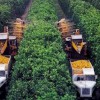 Mechanization has been the hallmark of American agriculture. Nearly 100 percent of the agronomic crops grown in the United States are plowed, planted, and harvested with mechanical equipment. Mechanical harvesting equipment for sweet oranges has been studied extensively since the 1970s and during the 2005/06 harvest season, trunk and canopy shakers harvested more than 36,000 acres of Florida citrus. Mechanically harvested citrus acreage, however, has decreased significantly since 2005. During the 2012/13 season, less than 9,000 acres were mechanically harvested (FDOC 2013). Nevertheless, development and adoption of mechanical harvesting technology is important to the long-term economic sustainability of the Florida orange juice processing industry. This 5-page fact sheet describing canopy shakerswas written by F.M. Roka, R.J. Ehsani, S.H. Futch, and B.R. Hyman, and published by the UF Department of Food and Resource Economics, August 2014.
Mechanization has been the hallmark of American agriculture. Nearly 100 percent of the agronomic crops grown in the United States are plowed, planted, and harvested with mechanical equipment. Mechanical harvesting equipment for sweet oranges has been studied extensively since the 1970s and during the 2005/06 harvest season, trunk and canopy shakers harvested more than 36,000 acres of Florida citrus. Mechanically harvested citrus acreage, however, has decreased significantly since 2005. During the 2012/13 season, less than 9,000 acres were mechanically harvested (FDOC 2013). Nevertheless, development and adoption of mechanical harvesting technology is important to the long-term economic sustainability of the Florida orange juice processing industry. This 5-page fact sheet describing canopy shakerswas written by F.M. Roka, R.J. Ehsani, S.H. Futch, and B.R. Hyman, and published by the UF Department of Food and Resource Economics, August 2014.
http://edis.ifas.ufl.edu/fe951
Citrus Mechanical Harvesting Systems–Trunk Shakers
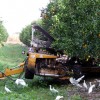 While citrus growers are rightfully concerned about restoring the health of their HLB-infected trees, more study and consideration should be given to mechanical harvesting. The costs to grow and harvest citrus have been escalating significantly since 2006, and the cost savings potential from mechanical harvesting technologies can help Florida growers remain economically viable. This 4-page fact sheet was written by F.M. Roka, R.J. Ehsani, S.H. Futch, and B.R. Hyman, and published by the UF Department of Food and Resource Economics, August 2014.
While citrus growers are rightfully concerned about restoring the health of their HLB-infected trees, more study and consideration should be given to mechanical harvesting. The costs to grow and harvest citrus have been escalating significantly since 2006, and the cost savings potential from mechanical harvesting technologies can help Florida growers remain economically viable. This 4-page fact sheet was written by F.M. Roka, R.J. Ehsani, S.H. Futch, and B.R. Hyman, and published by the UF Department of Food and Resource Economics, August 2014.
http://edis.ifas.ufl.edu/fe950
Analyzing Production Records of Commercial Sweet Orange Blocks to Measure Effects of Mechanical Harvesting on Long-Term Production and Tree Health
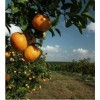 Ever since mechanical harvesting systems were introduced in the 1960s, growers expressed serious concerns over the potential negative impact mechanical harvesting could have on their trees. A study was undertaken in 2010 to analyze grower production data and compare whether mechanical harvesting had an adverse effect on fruit yield or shortened tree longevity as compared to hand harvesting. The purpose of this article is to describe how the study was organized and to summarize its results and conclusions. This 4-page fact sheet was written by Fritz M. Roka, Lisa H. House, and Katrina R. Mosley, and published by the UF Department of Food and Resource Economics, May 2014.
Ever since mechanical harvesting systems were introduced in the 1960s, growers expressed serious concerns over the potential negative impact mechanical harvesting could have on their trees. A study was undertaken in 2010 to analyze grower production data and compare whether mechanical harvesting had an adverse effect on fruit yield or shortened tree longevity as compared to hand harvesting. The purpose of this article is to describe how the study was organized and to summarize its results and conclusions. This 4-page fact sheet was written by Fritz M. Roka, Lisa H. House, and Katrina R. Mosley, and published by the UF Department of Food and Resource Economics, May 2014.
http://edis.ifas.ufl.edu/fe949
Water and Nitrogen BMPs for Tomato and Watermelon: Water Quality and Economics
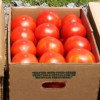 Results of a two-year, four-crop-cycles experiment indicated that the recommended Best Management Practice (BMP) water and fertilizer nitrogen (N) rates for seepage-irrigated tomato in south Florida can reduce water use and N leaching to groundwater without adversely impacting yield. The same is true for watermelon for average rainfall conditions. This 5-page fact sheet was written by Sanjay Shukla, Gregory S. Hendricks, Fritz M. Roka, and Thomas A. Obreza, and published by the UF Department of Agricultural and Biological Engineering, May 2014.
Results of a two-year, four-crop-cycles experiment indicated that the recommended Best Management Practice (BMP) water and fertilizer nitrogen (N) rates for seepage-irrigated tomato in south Florida can reduce water use and N leaching to groundwater without adversely impacting yield. The same is true for watermelon for average rainfall conditions. This 5-page fact sheet was written by Sanjay Shukla, Gregory S. Hendricks, Fritz M. Roka, and Thomas A. Obreza, and published by the UF Department of Agricultural and Biological Engineering, May 2014.
http://edis.ifas.ufl.edu/ae503
Complying with Farm Labor Regulations: Correctly Counting Compensable Hours
 United States law requires farm employers to keep accurate records of the number of daily compensable hours worked by their seasonal and migrant farm workers. The most prevalent and serious violations occur when agricultural employers do not correctly record the daily start and stop times for seasonal and migrant farm workers and so underreport the number of “compensable” hours for each worker. The purpose of this article is to discuss the concept of “compensable” hours in more detail and eliminate any confusion that might lead agricultural employers to make costly mistakes. This 4-page fact sheet was written by Fritz M. Roka and Michael T. Bayer, and published by the UF Department of Food and Resource Economics, February 2014.
United States law requires farm employers to keep accurate records of the number of daily compensable hours worked by their seasonal and migrant farm workers. The most prevalent and serious violations occur when agricultural employers do not correctly record the daily start and stop times for seasonal and migrant farm workers and so underreport the number of “compensable” hours for each worker. The purpose of this article is to discuss the concept of “compensable” hours in more detail and eliminate any confusion that might lead agricultural employers to make costly mistakes. This 4-page fact sheet was written by Fritz M. Roka and Michael T. Bayer, and published by the UF Department of Food and Resource Economics, February 2014.
http://edis.ifas.ufl.edu/fe940
Measuring Productivity of Citrus Hand Harvesters and Assessing Implications on Harvest Costs and Mechanical Harvesting Developments (FE933)
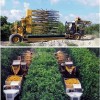 Existing mechanical harvesters recover 70 to 95 percent of the available fruit crop. While changes can be made to increase fruit recovery percentages, mechanical systems will never equal the fruit recovery percentages from hand-harvesting crews, much less capture 100 percent of the available fruit. Whether or not to glean (to use manual labor to collect fruit not harvested by the machine) will remain an important question that growers will have to face with every block they choose to mechanically harvest. This study incorporated field harvesting data and developed a model that predicted the extent to which labor productivity would be affected by decreasing the number of oranges available for harvesting by manual labor. Given current market prices of fruit, recovery percentage of crops harvested using mechanical harvesting equipment can improve up to 99 percent and gleaning will remain a profitable activity.
Existing mechanical harvesters recover 70 to 95 percent of the available fruit crop. While changes can be made to increase fruit recovery percentages, mechanical systems will never equal the fruit recovery percentages from hand-harvesting crews, much less capture 100 percent of the available fruit. Whether or not to glean (to use manual labor to collect fruit not harvested by the machine) will remain an important question that growers will have to face with every block they choose to mechanically harvest. This study incorporated field harvesting data and developed a model that predicted the extent to which labor productivity would be affected by decreasing the number of oranges available for harvesting by manual labor. Given current market prices of fruit, recovery percentage of crops harvested using mechanical harvesting equipment can improve up to 99 percent and gleaning will remain a profitable activity.
This 6-page fact sheet was written by Fritz M. Roka and Barbara R. Hyman, and published by the UF Department of Food and Resource Economics, May 2013.
http://edis.ifas.ufl.edu/fe933
Manual 2009 de los Reglamentos del Empleo que Regulan a los Empleadores y Trabajadores Agrícolas de Florida
This handbook by Fritz Roka, Michael Olexa, Katherine Smallwood, Leo Polopolus, and Carol Fountain, is the Spanish language version of the 2009 Handbook of Employment Regulations Affecting Florida Farm Employers and Workers. Published by the UF Department of Food and Resource Economics, October 2010.
FE856 Introducción
FE857 Trabajo del Menor de Edad [Estatal y Federal]
FE858 Derechos Civiles y Antidiscriminación
FE859 Crédito por Ingreso Tributario de Trabajo [Federal]
FE860 Plan de Emergencia y el Derecho-a-Saber de la Comunidad [Estatal]
FE861 Ley del Permiso Médico y Familiar de 1993 [Federal]
FE862 Pruebas y Registro del Contratista de Trabajo Agrícola [Estatal]
FE863 Saneamiento de Campo y Agua Potable [Estatal y Federal]
FE864 Ley de Propietarios e Inquilinos [Estado]
FE865 Ley de los Derechos Humanos de 1977 [Estatal]
FE866 Programas de Reforma de Inmigración [Federal]
FE867 Retención de Impuestos sobre el Ingreso para los Trabajadores Agrícolas [Federal]
FE868 Campos de Trabajo del Trabajador Agrícola Migrante [Federal]
FE869 Viviendas del Trabajador Migrante [Estatal]
FE870 Ley de Protección del Trabajador Agrícola Migrante y Estacional (LPTME) [Federal]
FE871 Salario Mínimo (Ley de las Normas Justas de Trabajo) [Federal]
FE872 Ley de Salud y Seguridad Ocupacional (LSSO) [Federal]
FE873 Ley de Salud y Seguridad Ocupacional (LSSO) Norma de Comunicación del Riesgo [Federal]
FE874 Notificación de Cierre de Planta / Despidos (Ley de Advertencia) [Federal]
FE875 Protección del Polígrafo para los Empleados
FE876 Ley de Portal a Portal de 1947 [Federal]
FE877 Ley del Derecho-a-Saber [Estatal]
FE878 Derecho al Trabajo [Estatal]
FE879 Seguro Social y Seguro Médico [Federal]
FE880 Trasporte—Pruebas de Alcohol y Drogas [Federal]
FE881 Transporte—Reglamentos de Seguridad de Auto-Transporte para los Conductores de Camiones Agrícolas [Federal]
FE882 Transporte—Reglametos de Seguridad de Auto-Transporte para Trasladar Empleados Agrícolas Migrantes [Federal]
FE883 Transporte de los Trabajadores Agrícolas Migrantes [Estatal]
FE884 Indemnización por Desempleo [Federal y Estatal]
FE885 Crédito de Impuestos para Oportunidad de Trabajo (CIOT) [Federal]
FE886 Normas de Protección al Trabajador—APA [Federal]
FE887 Indemnización de los Trabajadores [Estatal]
FE836 Non-Governmental Organizations Serving Farmworkers in Florida
FE836, a 15-page fact sheet by Carlene Thissen and Fritz Roka, is a compilation of the non-governmental organizations that serve farmworkers in Florida. Published by the UF Department of Food and Resource Economics, July 2010.
http://edis.ifas.ufl.edu/fe836
SC088 Costs and Returns for Sugarcane Production on Muck Soils in Southern Florida 2008 – 2009
SC088, a 14-page report by Fritz M. Roka, Leslie E. Baucum, and José Alvarez, estimates an enterprise budget that reflects annual costs and returns for a 5,000-acre farm that grows sugarcane on organic soil, commonly referred to as “muck.” Includes references. Published by the UF Department of Food and Resource Economics, March 2010.
http://edis.ifas.ufl.edu/sc088
FE824 Water Quality Credit Trading: General Principles
FE824, an 8-page fact sheet by Tatiana Borisova and Fritz Roka, reviews the basic components of a water quality credit trading program and discusses opportunities and challenges associated with a water quality credit trading program design. Includes references. Published by the UF Department of Food and Resource Economics, December 2009.
http://edis.ifas.ufl.edu/fe824
FE812 The Florida Citrus Industry: Government and Non-Government Organizations
FE812, a 5-page fact sheet by Thomas H. Spreen, Ronald P. Muraro, Fritz M. Roka, and R. Allen Morris, identifies the major organizations that work for the benefit of the Florida citrus industry and provides a brief introduction to their activities. Published by the UF Department of Food and Resource Economics, October 2009.
http://edis.ifas.ufl.edu/FE812
SC087 Projected Costs and Returns for Sugarcane Production on Mineral Soils of South Florida, 2007-2008
SC087, a 16-page report by Fritz M. Roka, Jose Alvarez, and Leslie E. Baucum, develops a model enterprise budget that reflects annual costs and returns for a 5,000-acre farm that grows sugarcane on mineral soils. Includes references. Published by the UF Department of Agronomy, September 2009.
http://edis.ifas.ufl.edu/SC087
FE792 Compensating Farm Workers through Piece Rates—Implications on Harvest Costs and Worker Earnings
FE792, a 4-page fact sheet by Fritz M. Roka, explains how a piece rate payment system works and its implications on production costs and farm worker earnings. Includes references. Published by the UF Department of Food and Resource Economics, February 2009.
http://edis.ifas.ufl.edu/FE792
FE752 Benefits of an Abscission Agent in Mechanical Harvesting of Citrus
FE752, a 4-page fact sheet by Fritz Roka, Jackie Burns, Jim Syvertsen, and Robert Ebel, describes research into the use of abcission agents in mechanical harvesting, to extend the harvesting window to later in the season, permit faster harvesting speed, enhance fruit recovery percentages, and reduce tree damage. Includes references. Published by the UF Department of Food and Resource Economics, September 2008.
http://edis.ifas.ufl.edu/FE752
FE751 A Decision-Aid Tool to Compare Costs of Mechanical Harvesting Systems
FE751, a 4-page illustrated fact sheet by Fritz Roka, provides instructions in the use of a Web-based tool to help growers and harvesting contractors organize relevant harvest cost information and then calculate and compare net harvest costs among all available harvesting options. Published by the UF Department of Food and Resource Economics, September 2008.
http://edis.ifas.ufl.edu/FE751
